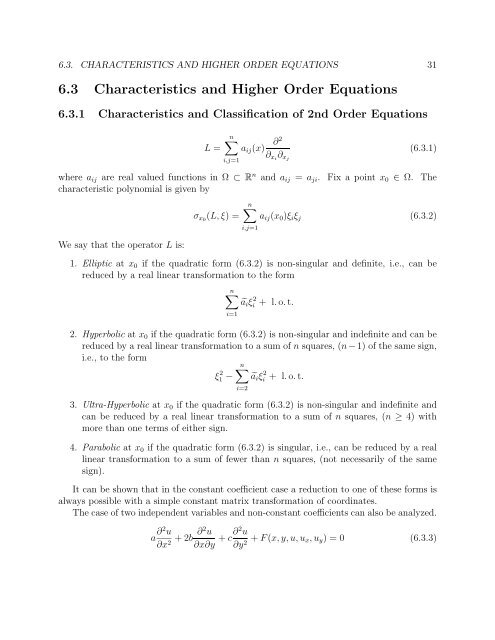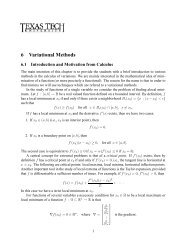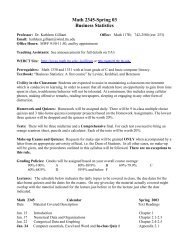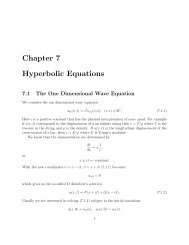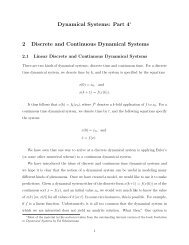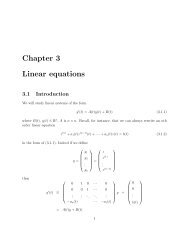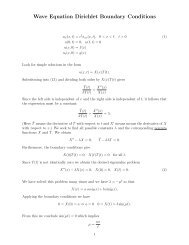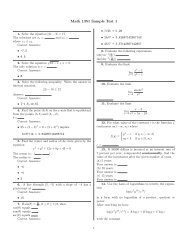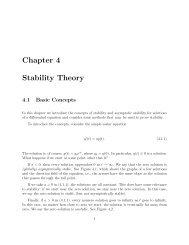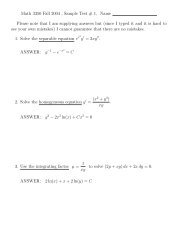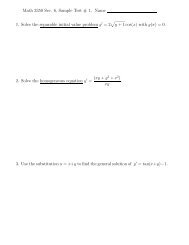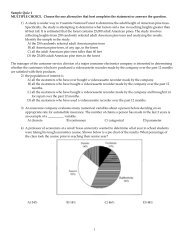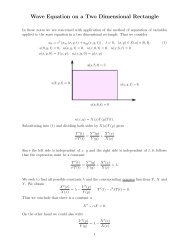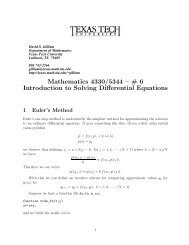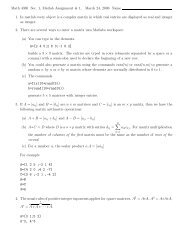Chapter 6 Partial Differential Equations
Chapter 6 Partial Differential Equations
Chapter 6 Partial Differential Equations
Create successful ePaper yourself
Turn your PDF publications into a flip-book with our unique Google optimized e-Paper software.
6.3. CHARACTERISTICS AND HIGHER ORDER EQUATIONS 31<br />
6.3 Characteristics and Higher Order <strong>Equations</strong><br />
6.3.1 Characteristics and Classification of 2nd Order <strong>Equations</strong><br />
L =<br />
n∑ ∂ 2<br />
a ij (x)<br />
(6.3.1)<br />
∂ xi ∂ xj<br />
i,j=1<br />
where a ij are real valued functions in Ω ⊂ R n and a ij = a ji . Fix a point x 0 ∈ Ω. The<br />
characteristic polynomial is given by<br />
We say that the operator L is:<br />
σ x0 (L, ξ) =<br />
n∑<br />
a ij (x 0 )ξ i ξ j (6.3.2)<br />
i,j=1<br />
1. Elliptic at x 0 if the quadratic form (6.3.2) is non-singular and definite, i.e., can be<br />
reduced by a real linear transformation to the form<br />
n∑<br />
ã i ξi 2 + l. o. t.<br />
i=1<br />
2. Hyperbolic at x 0 if the quadratic form (6.3.2) is non-singular and indefinite and can be<br />
reduced by a real linear transformation to a sum of n squares, (n − 1) of the same sign,<br />
i.e., to the form<br />
n∑<br />
ξ1 2 − ã i ξi 2 + l. o. t.<br />
i=2<br />
3. Ultra-Hyperbolic at x 0 if the quadratic form (6.3.2) is non-singular and indefinite and<br />
can be reduced by a real linear transformation to a sum of n squares, (n ≥ 4) with<br />
more than one terms of either sign.<br />
4. Parabolic at x 0 if the quadratic form (6.3.2) is singular, i.e., can be reduced by a real<br />
linear transformation to a sum of fewer than n squares, (not necessarily of the same<br />
sign).<br />
It can be shown that in the constant coefficient case a reduction to one of these forms is<br />
always possible with a simple constant matrix transformation of coordinates.<br />
The case of two independent variables and non-constant coefficients can also be analyzed.<br />
a ∂2 u<br />
∂x 2 +2b ∂2 u<br />
∂x∂y + c∂2 u<br />
∂y 2 + F (x, y, u, u x,u y ) = 0 (6.3.3)


